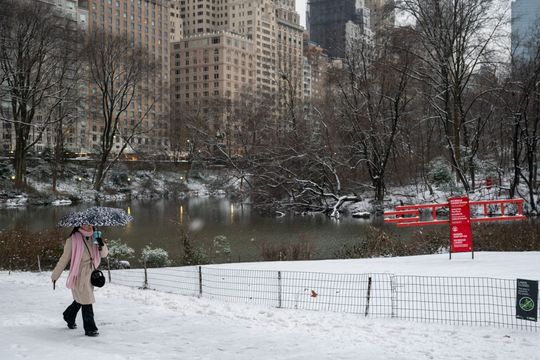U.S. natural gas production reached record highs in December, driving down prices for the heating fuel despite the chilly start to 2024.
The surge in gas supply, coupled with forecasts of unusually warm weather in the weeks ahead, has led to a more than 30% reduction in natural gas prices since the onset of the heating season in late October. Natural gas futures for delivery next month closed Thursday at $2.571 per million British thermal units, marking a 13% decrease from a year ago. March futures settled at $2.18, representing a 44% decline compared to the previous year.
This unexpected decline in prices comes as a relief for U.S. households and businesses, which faced soaring utility bills following Russia’s 2022 invasion of Ukraine, triggering energy market shocks and inflationary pressures across various industries.
While concerns about fuel shortages have eased, worries have shifted towards the U.S.’s capacity to store the growing surplus of gas. Energy Information Administration data revealed one of the largest weekly drawdowns of domestic gas stockpiles, as increased withdrawals were necessitated by blizzards that swept the Plains and brought the first measurable snowfall to New York City in two years.
The adverse weather conditions also resulted in frozen gas wells across swathes of the country, leading to a production decline estimated at over 7% by gas consulting firm East Daley Analytics. Despite these challenges, domestic gas supplies, which began the heating season in surplus, currently remain 5.2% above average levels for this time of year.
The forecast of unseasonably warm weather into February is expected to reduce demand and thaw out frozen wells, thereby restoring production levels close to the records set last month.
Daily gas production in the Lower 48 states averaged a record 105.5 billion cubic feet a day in December, according to S&P Global Commodity Insights. The average daily output for the year reached 102.2 billion cubic feet, a 3.7% increase from 2022 and a record high, according to the firm.
Analysts predict that prices will need to remain low to discourage excessive drilling by producers while stimulating demand from industrial buyers and exporters. Otherwise, storage facilities could become overwhelmed before the next heating season.
RBC Capital Markets analyst Christopher Louney anticipates that prices may not rise significantly until late this year or early 2025, coinciding with the opening of new liquefied natural gas export terminals, which are expected to boost demand. However, he emphasized that without another cold snap to diminish the oversupply, prices may remain subdued.
“Winter may not be over, but based on current forecasts, it looks like it could be,” Louney remarked.

